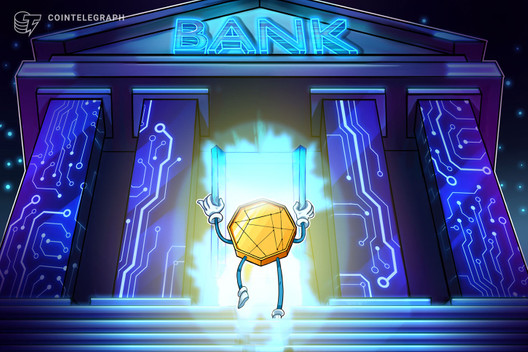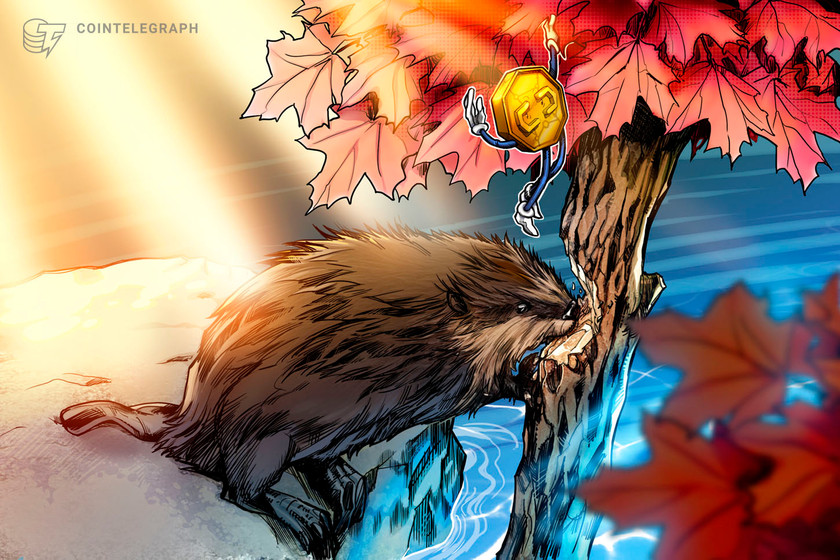Sterling Witzke has been working at Winklevoss Capital — a venture capital firm set up by the famous Winklevoss twins — for five years now. As a professional investor, she is very interested in financing early stage crypto and blockchain projects. She believes that stablecoins are perfectly designed for the needs of internet payments and will steadily gain popularity as the industry evolves.
We talked to Sterling Witzke about the future of fiat-pegged cryptocurrencies, the necessity of proper legal frameworks and the future of the maturing crypto industry.
Clarity is always good for an ecosystem
Ana Berman: How do you think, what will 2019 bring in terms of regulation? The question is related to the ads that Gemini recently launched, which said, in particular, “Crypto needs rules.” Don’t you think it undermines the whole idea of decentralization?
Sterling Witzke: The short answer is no. As you know from the slogans, Gemini is very pro-thoughtful regulation and believes that consumers in the crypto space deserve the same protection as consumers in other industries.
It’s all about making fair outcomes for all. It doesn’t undermine the original ethos of crypto to have regulations. The distinction comes with the companies that are built on top of the protocol. So, at the protocol level, it’s absolutely correct that you don’t need any more regulation and rules, because those are already built in.
You’ve got the math and the cryptography that dictates the rules on the protocol. The difference is that the applications and companies built on top of those protocols are run by humans, and we all know they are fallible. That’s where the oversight comes into play.
AB: The United States Securities and Exchange Commision (SEC) has recently claimed that crypto will be its top examination priority in 2019. Do you believe the SEC will take some important steps this year?
SW: I hope so. I think that regulatory clarity, especially on things like security tokens versus utility tokens, is needed to get us towards mass adoption. I know there are several companies that were thinking about raising capital, but are now a bit hesitant because they just aren’t quite sure how to operate in a gray area. Such firms want to ask for permission rather than forgiveness, which is our model also, and thus we appreciate that. But I think that clarity is always good for an ecosystem.
AB: Many entrepreneurs participate in crypto initiatives, like draft bills, round tables, etc. Is Winklevoss Capital interested in proposing some regulation or maybe discussing it with legislators?
SW: Tyler and Cameron are very involved and proactively working with regulators to help form the way that these rules are made, which I think is very important. We don’t want government to come down with a heavy hand, as they might not understand the intricacies of the ecosystem.
I am not involved in the regulatory side, but Tyler and Cameron have been very active in the space for a long time. One of the most recent initiatives is the Virtual Commodities Association [VCA], which is a self-regulatory organization started by Gemini. I believe that its current executive director, Maria Filipakis, is actually from the the New York Department of Financial Services [DFS]. So, there is a lot of ongoing communication and collaboration with regulators to try to move this case forward.
Investors are dipping their toes in crypto, no one is taking the plunge
AB: As far as we know, Winklevoss Capital is mostly focused on the investments and the institutional side of the business. Do you believe there will be more Wall Street involvement in 2019? What do you expect in terms of institutional investments?
SW: I don’t think that 2019 is necessarily the year. The end of 2017 was so crazy. People tend to think of the space as moving at lightning speed, but the underlying development doesn’t move that fast. I think it takes a while for institutions to get comfortable. There needs to be a better custody, and any kind of healthy debt and credit markets to get those institutions really excited.
So, I don’t think that I would make a prediction that 2019 is necessarily the year. I think that a lot of investors are thoughtfully dipping their toes in, but I don’t really see anyone completely taking the plunge.
Crypto markets face healthy corrections, as any emerging industry
AB: CNBC’s Brian Kelly once compared crypto regulations to a ski track. Someone has to put a warning sign on a dangerous one, and the skier then decides whether to take risk or not. Do you think it is a relevant description of what’s going on?
SW: I think that is a nice sentiment. The majority of me believes in free markets and free will. Everyone should be able to invest in what they want to invest in. But the fact is that we have some responsibilities to protect people.
I grew up in South Dakota, for example, and crypto has not really made a splash in the Midwest, yet. In the end of 2017, I had lots of friends who bought Bitcoin at $18,000 or $19,000 and kind of lost their shirts. For such a new market, we need the same protections as we do with public equities. The precedent is already here, and there is really no difference.
AB: You just mentioned the bubble of December 2017. Do you think it was a necessary process — let’s say, a sign of development?
SW: One hundred percent. I think that lots of new industries need irrational exuberance to garner excitement and really get the word out there. Thousands more people now know of Bitcoin. That said, there’s no reason why Bitcoin should have been $19,000.
That was all irrational exuberance, bubble — whatever you want to call it. You could maybe argue that this is an overly healthy correction, but I think that a healthy correction was 100 percent necessary. It’s part of the traditional cycle of a new industry emerging.
It was necessary to move this base forward, because it got rid of a lot of bad actors. From the end of 2017 to the beginning of 2018, we saw every Joe Blow creating an ICO [initial coin offering] just to raise, in some instances, hundreds of millions of dollars, and then take off and drink a Mai Tai on the beach. But their investors lost everything. The people that are left and active in the space are really in it for the long term. They see the fundamental effect that blockchain will have globally for the next 100 years. These people are in the industry for the long term.
Bitcoin is a store of value, not a speculative asset
AB: What, in your opinion, is a fair price for Bitcoin?
SW: I won’t make any price predictions, but I am happy where we are, because we’re in a build phase in the ecosystem. I think that the speculators that drove the price up are now sitting on the sidelines. And again, the people that are left truly believe in an ecosystem and think of Bitcoin as a store of value rather than a speculative asset.
AB: So, the ongoing price correction, let’s say, when Bitcoin hovers around $3,500, is more or less a fair process, right?
SW: I think it’s a fair process. And we’ll probably be at these price levels for a while. There is a lot of underlying infrastructure work to be done with things like scalability, user experience, etc. Maybe not on the underlying infrastructure part, but on the top layer. People aren’t going to use these applications if we can’t make it foolproof and extremely easy to use.
Stablecoins are designed for internet payments
AB: As per recent studies, the era of ICO craziness is now over. Many believe the future is in tokenized assets and stablecoins. Do you share this stance?
SW: The short answer is yes. The dollar has been a great form of payment for a long time, but it was not designed for the internet age we are currently in. We need a stable currency that works with the blockchain and the internet. Fiat-pegged stablecoins bring us ability to purchase assets or to be paid dividends in assets that are not volatile.
The craziest example of using something like Bitcoin as a form of payment is the pizza that was bought for 10,000 BTC back in the day. At that time, it was $20, and now it is about $3 million. So, we need something like a fiat-backed stablecoin to be able to facilitate transactions on the blockchain. It’s a currency designed for crypto.
That said, I’ll give my plug for the Gemini dollar [GUSD]. The Gemini dollar is 100 percent backed by the U.S. dollar, and it’s the only stablecoin that has actually released their banking partner, State Street, and are very upfront about that. State Street can say, “Yes, with 100 percent certainty we have 100 percent of the dollars that back GUSD.”
AB: Can you please tell us something about Winklevoss Capital’s blockchain plans for 2019?
SW: Winklevoss Capital invests in both blockchain and nonblockchain-related startups. So on the traditional venture capital side, we invest in early stage companies, both seed and Series A across industries. We’ve done a little bit of everything from e-commerce to IT hardware, and international logistics, and everything else.
On the blockchain side of things, we think about investing very similarly. We’re not trying to be a hedge fund, we’re not flipping public tokens. We sat out of the ICO craze, we’ve already discussed. We’re looking for a really long-term companies and founders that are trying to build a company for the next decades. We’re investing very patient capital with a seven to 10 years’ time horizon. We’re focused very much on infrastructure. As I mentioned, we think that scalability solutions for things like smart contracts are really interesting.
There’s so many interesting applications, like the ability to prove identity and bank the unbanked, which involves 2 billion people that don’t have an official form of ID or can’t get a bank account. If you think about 2 billion people coming online, not a single existing protocol can handle that.
You can also think of Bitcoin doing seven to 10 transactions a second, Ethereum doing 10 to 15, as a maximum — that’s just not feasible. So, we’re looking at solutions that can solve that problem.
Blockchain will be in focus next years
AB: Could you please name any particular companies you’ve already worked with or would like to invest into?
SW: Not yet, unfortunately. It’s something that I’m actively looking for but have not found, yet. We have not made any investments in this space. I think it’s an area of focus over the next year. I’m hopeful that more and more entrepreneurs will be focusing on that problem because it’s massive.
There are so many applications for a blockchain in the U.S. and in developed countries — to make markets more efficient, to fix what I would call First World problems, etc. But, at the end of the day, when we’re talking about addressing the bottom of the pyramid and applications for that, there is a huge quality of life difference that can be more impactful. I’m looking forward to more entrepreneurs focusing on those applications.
AB: Apart from the social application of blockchain, could you mention some areas that are interesting? What are the most promising industries for blockchain?
SW: I think that remittances are also interesting, but this is a social application as well. Gaming is an industry that is really promising. If you think about developers, they’ve been operating digital economies for a decade. Nobody understands the digital supply and demand economics better than gaming developers, and so that feels like a natural adaptation of blockchain — things like nonfunctional goods within games.
Imagine a kid that spends all his time developing this gaming character and another person that really loves playing a game like Fortnite, for example, but doesn’t have the same amount of time to dedicate to it. In that case, the kid could sell the character to someone who’s willing to pay. And, actually, that’s a good use case for stablecoins — defensible goods within gaming.
AB: How many years do we need for mass adoption?
SW: Most likely, several. There is a lot that needs to happen to the underlying infrastructure, and an amazing amount of things that needs to happen to usability before the average consumer is really using applications.
The interview was conducted at the sidelines of the Crypto Finance Conference in St. Moritz, Switzerland, in January 2019. The panel Sterling Witzke took part in was called “From anarchy to adoption — are we selling out or really creating a better world?”









